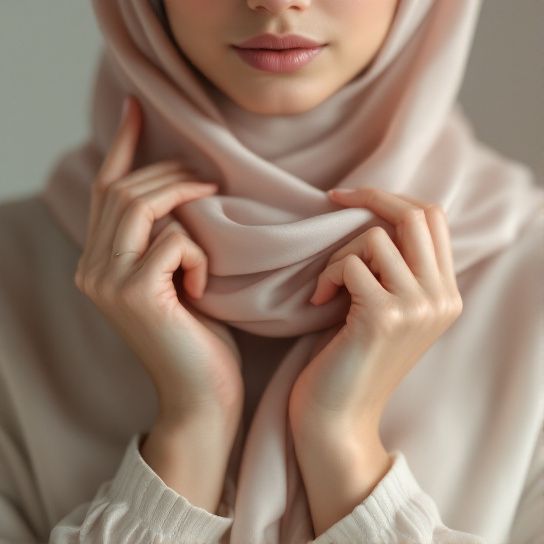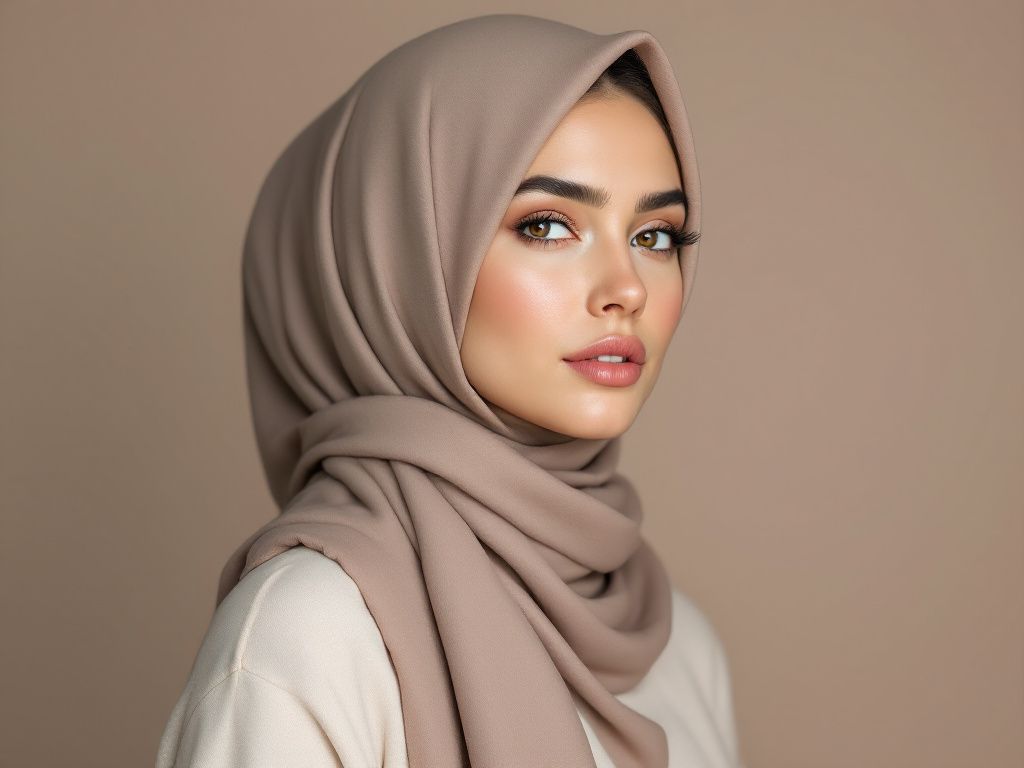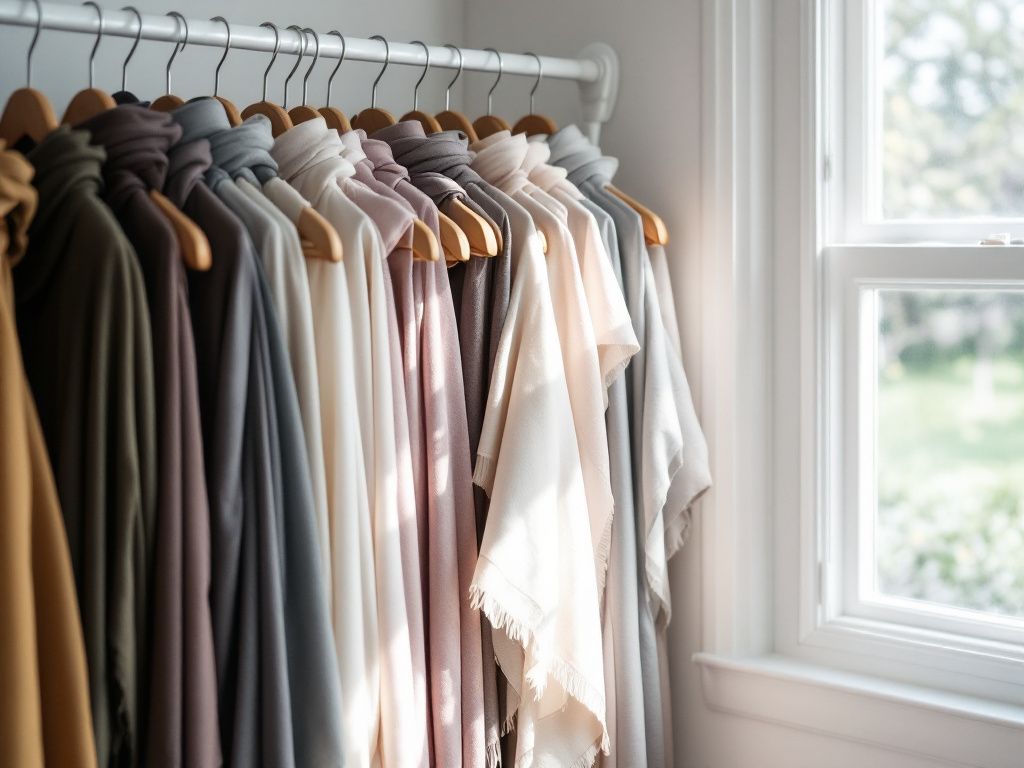Easy Hijab Care Routines: Keep Your Hijabs Looking Fresh Without the Fuss

Ever found yourself dreading laundry day because you just can’t figure out the whole hijab care routine? Seriously, who has the time to iron, sort, and meticulously maintain piles of fabric every week? Keeping your beloved hijabs looking fresh and flawless doesn’t have to be this daunting, time-consuming task. In fact, it can be as simple as the everyday steps you take for other clothes you love wearing. Let’s talk about a few easy hijab care routines that will get you and your hijabs back to looking fabulous without breaking a sweat.
Balancing Beauty and Busy Schedules
It’s a common scene: you open your closet in search of your favorite hijab only to find it crumpled and unfit for your perfectly-chosen outfit. It’s frustrating! Maybe you’re caught in the rush of daily life, juggling a million things at once and let’s be real—who prioritizes ironing anymore? Strict rules don’t fit into your busier-than-ever schedule; you need something that flows with your life, right?
*sigh* Yeah, I hear you. So let’s dive into how you can manage hijab care like a pro with almost zero added stress.
Sorting Made Simple
First, let’s get personal. Are you the kind of person who sorts laundry by color or one who throws caution to the wind and lumps everything together? When it comes to easy hijab care routines, start by sorting your headscarves by fabric. It sounds like an added step, but trust me, it’s a timesaver down the line. Delicate fabrics like chiffon and silk can be fussy and need tender loving care, while your comfy cottons and jerseys are less likely to give you heartaches when they tumble around in the washer.
With a Little Help from Gentle Cycles

Washing machines aren’t the enemy here, but they can be unfriendly sometimes. For maintaining your hijabs’ quality, use a gentle cycle. Engage that ‘delicate’ button! A mild detergent also works wonders in preserving the vibrancy and life of the thousands of colors you love wearing. Strong detergents can be harsh; gentle cleansers are a safeguard against those pesky wrinkles and shrinks.
The Hand-Washing Technique
Sometimes your favorite pieces need a little extra TLC. Hand washing might sound retro, but it’s perfect for those ‘special-occasion’ hijabs that seem to weep at the sight of a laundry machine. You don’t need anything fancy—a simple basin or even the bathroom sink does wonders. Fill it with water, add some gentle detergent; let your hijabs soak for a bit, then give them a light swish. That’s it. Easy, peasy.
Practice Makes Wrinkle-Free
Here’s the bit many of us tend to skip—ironing or steaming. And I totally get it. It’s just not as exciting as a Netflix binge. But trust me, investing 10 minutes post-drying makes a world of difference in how crisp and chic your hijab looks the next time you reach for it. It’s become so automatic, you won’t even think about it!
Steam It Up
If that hot, heavy iron gets more resistance from you than encouragement, try steaming. Handheld garment steamers are like magic wands for eliminating wrinkles in a blink. Seriously, one pass and you’re good—your fabric instantly revives! Just make sure you keep it at a safe distance to avoid creating creases of its own.
Stubborn Stains and Their Stories
Okay, let’s face it: we’re all imperfect human beings who might spill some coffee or drop a curry here and there. It happens. When those accidents occur, treat the stains quickly so they don’t become permanent pages in the ‘Stain Diaries.’

- Blot, Don’t Rub: Always blot the area with a clean cloth. Avoid rubbing, as it drives the stain deeper.
- Immediate Rinse: If you can, run the stained area under cold water. Not hot—this part’s important because heat can set some stains in.
- Mild Approach: Use a gentle stain remover or simply mix baking soda with some water to attack the stain.
Embrace the spontaneity of life while still keeping those lovely hijabs intact. You rescue it in time, it’ll be like nothing ever happened.
Drying Divas
Now, drying isn’t as straightforward as hanging them up anywhere you find space. Treating your hijabs with care means air drying is your newest bestie. Laying flat to dry, especially when dealing with more delicate pieces, maintains their texture and longevity. If you must hang, select a drying rack rather than dangling them from hangers—it’s kinder on the fabric.
Silk, Satin, and the Special-Friends Club
I know we’ve gone on a deep dive, but here’s a friendly thunk reminder for those silk and satin hijabs. These types demand the royal treatment at every juncture: they love hanging out with mild detergents, fancy air drying, and crinkle-free ironing. They easily take center stage in the hijab care theater, deserving of some slow attention and admiration for sticking by us year after year.
Fun With Nifty Storage Hacks

Possibly more relatable than any of it is the messy pile of hijabs taking up closet or drawer space. Feel seen? Enter the easy hijab care routine superstar: streamlined storage. Drawstring linen bags or even simple baskets invite stability and organization. You can even vacuum-seal those that aren’t seasonal. Plus, a proper storage arrangement reduces the chance of accidental pulls or unexpected folding lines.
Shade Headquarters
Do you pull out a hijab from storage, only to realize it’s faded from your favorite color? Keeping them shielded from direct sunlight or artificial lighting is key. Those vibrant beauties need a touch of darkness to rest in away from fading fwaals.
Bringing Back the Freshness
A light spritz of fabric freshener can bring life back to textiles pulled from deep corners of your storage haven. Trust me; it’s like they’re waking up freshly packed from a shopping spree! But be careful—overusing these can build chemical residues.
We All Learn as We Go
We’ve covered a lot about maintaining your hijabs simply because they’re a part of who you are, and keeping them tidy should align with how you choose to handle your life. These easy hijab care routines are not about perfection—rather about finding steps that fit the puzzle of everyday bustle. Cultivating routine takes time; rolling with the ebbs and flows, finding spaces where care fits in, naturally. That balance creates a sense of calm amidst chaos when you know your hijabs are ready for any occasion life throws at you.
Life might be spinning, but managing and caring for your hijabs doesn’t need to twist along with it. Now that we’ve rambled through what you can do, try weaving some of these in—test their truth, let them become habits if that’s where they belong. Embrace the caring process with all its beautiful imperfections. You’re probably doing better than you think!
Frequently Asked Questions
What are the best fabrics for hijab to prevent hair damage?
The best fabrics for hijab to prevent hair damage are pure cotton, satin, or silk. These fabrics are gentle on the hair and scalp, reducing friction and breakage. Avoid using nylon or other synthetic fabrics that can cause hair to break, frizz, or become greasy[1][2][5).
How should I dry my hair after washing while wearing a hijab?
To maintain healthy hair, it is recommended to let your hair air-dry naturally after washing. If you need to use a hair dryer, set it to a low to medium heat setting. Wrapping your hair in a microfiber turban can also help it dry and keep it out of the way. Avoid wearing your hijab while your hair is still wet[1][2][5).
What hair care practices can help prevent hair breakage and thinning while wearing a hijab?
To prevent hair breakage and thinning, use a mild shampoo suitable for your hair type, and avoid using elastic ties or tight buns. Instead, use scrunchies or silk hair ties. Regularly comb your hair with a wide-tooth comb to reduce tangles and hair fall. Also, ensure your hijab is loose to maintain air circulation and reduce scalp tension[1][2][5).
How often should I wash my hair while wearing a hijab?
The frequency of washing your hair depends on your hair type. For oily hair, daily washing with a mild shampoo may be necessary. For dry or chemically treated hair, washing every 1-2 weeks and using hydrating masks and leave-in products can help maintain moisture. It is crucial to find a washing schedule that works best for your specific hair needs[1][2][5).
References










